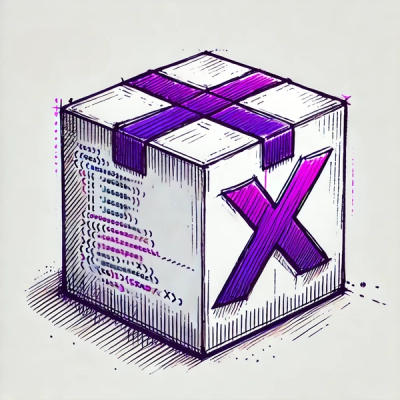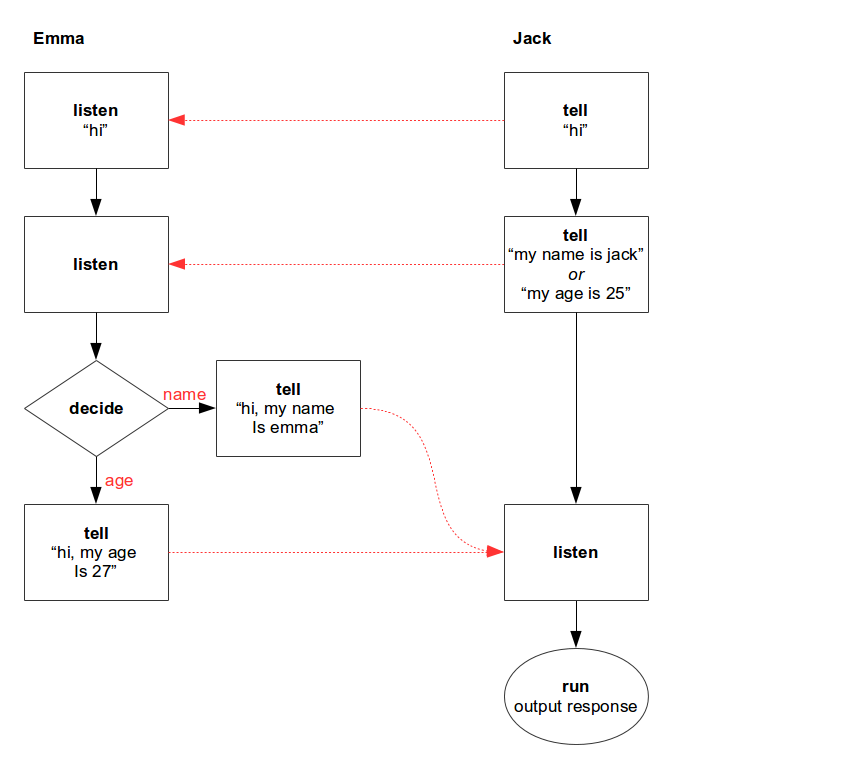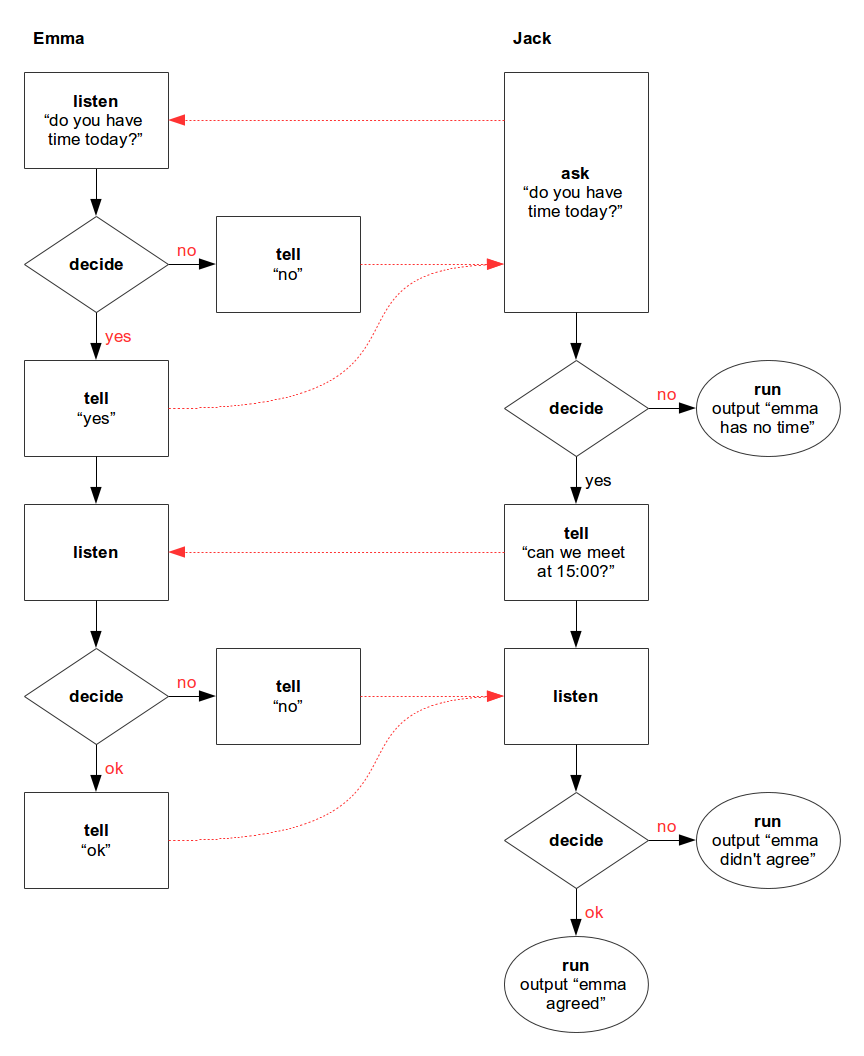
Security News
pnpm 10.0.0 Blocks Lifecycle Scripts by Default
pnpm 10 blocks lifecycle scripts by default to improve security, addressing supply chain attack risks but sparking debate over compatibility and workflow changes.
Dynamic communication flows between message based actors.
Babble makes it easy to code communication flows between actors. A conversation
is modeled as a control flow diagram containing blocks ask, tell, listen,
decide, and then. Each block can link to a next block in the
control flow. Conversations are dynamic: a scenario is build programmatically,
and the blocks can dynamically determine the next block in the scenario.
During a conversation, a context is available to store the state of the
conversation.
Babble uses customizable messaging to communicate between actors. It comes with built in support to communicate locally, and has as support for pubnub to connect actors distributed over multiple devices.
Babble runs in node.js and in the browser.
Install babble via npm:
npm install babble
Load in node.js:
var babble = require('babble');
Load in the browser:
<!DOCTYPE html>
<html>
<head>
<!-- load pubnub, only needed when using pubnub -->
<script src="http://cdnjs.cloudflare.com/ajax/libs/pubnub/3.5.4/pubnub.min.js"></script>
<!-- load babble -->
<script src="../../dist/babble.min.js"></script>
</head>
<body>
</body>
</html>
Then, babble can be loaded and used:
var babble = require('babble');
var emma = babble.babbler('emma');
var jack = babble.babbler('jack');
emma.listen('what is your age?')
.tell(function () {
return 25;
});
jack.ask('emma', 'what is your age?', function (age, context) {
console.log(context.from + ' is ' + age + ' years old');
});
TODO: describe control flow blocks
Babble can be used to listen for messages and send a reply. In the following example, emma listens for a message "hi", then she will listen to the next message. Depending on the contents of this second message, she determines how to respond. Jack says hi to emma, then tells his name or age, and awaits a response from emma.
This scenario can be represented by the following control flow diagram:

The scenario can be programmed as:
var babble = require('babble');
var emma = babble.babbler('emma');
var jack = babble.babbler('jack');
function printMessage (message, context) {
console.log(context.from + ': ' + message);
return message;
}
emma.listen('hi')
.listen(printMessage)
.decide(function (message, context) {
return (message.indexOf('age') != -1) ? 'age' : 'name';
}, {
'name': babble.tell('hi, my name is emma'),
'age': babble.tell('hi, my age is 27')
});
jack.tell('emma', 'hi')
.tell(function (message, context) {
if (Math.random() > 0.5) {
return 'my name is jack'
} else {
return 'my age is 25';
}
})
.listen(printMessage);
The following scenario describes two peers planning a meeting in two steps: First jack asks whether emma has time for a meeting, and if so, jack will propose to meet, and await emma's response.
This scenario can be represented by the following control flow diagram:

The scenario can be coded as follows. Note that the implementations of the control flow blocks are separated from the flow itself.
var babble = require('babble');
var emma = babble.babbler('emma');
var jack = babble.babbler('jack');
function decideIfAvailable () {
return (Math.random() > 0.4) ? 'yes' : 'no';
}
function decideToAgree (response) {
if (response == 'can we meet at 15:00?' && Math.random() > 0.5) {
return 'ok';
}
else {
return 'no';
}
}
emma.listen('do you have time today?')
.decide(decideIfAvailable, {
yes: babble.tell('yes')
.listen()
.decide(decideToAgree, {
ok: babble.tell('ok'),
no: babble.tell('no')
}),
no: babble.tell('no')
});
function noTime () {
console.log('emma has no time');
}
function agreesToMeet (response) {
return (response == 'ok') ? 'ok': 'no';
}
function agreement () {
console.log('emma agreed');
}
function noAgreement () {
console.log('emma didn\'t agree');
}
jack.ask('emma', 'do you have time today?')
.decide({
yes: babble.tell('can we meet at 15:00?')
.listen()
.decide(agreesToMeet, {
ok: babble.then(agreement),
no: babble.then(noAgreement)
}),
no: babble.then(noTime)
});
Babble has the following factory functions:
babble.ask(message: String [, callback: Function]) : Block
Send a question and listen for a reply.
This is equivalent of doing tell(message).listen([callback]).
babble.babbler(id: String) : Babbler
Factory function to create a new Babbler.
babble.babblify(actor: Object, params: Object) : Object
Babblify an actor. The babblified actor will be extended with functions
ask, tell, and listen.
Babble expects that messages sent via actor.send(to, message) will be
delivered by the recipient on a function actor.onMessage(from, message).
Babble replaces the original onMessage with a new one, which is used to
listen for all incoming messages. Messages ignored by babble are propagated
to the original onMessage function.
The function accepts the following parameters:
actor: Object
The actor to be babblified. Must be an Object containing functions
send(to, message) and onMessage(from, message).
[params: Object]
Optional parameters. Can contain properties:
id: string
The id for the babblersend: string
The name of an alternative send function available on the actor.onMessage: string
The name of an alternative onMessage function available on the actor.The function returns the babblified actor. A babblified actor can be restored
in its original state using unbabblify(actor).
babble.decide([decision: Function, ] choices: Object<String, Block>) : Block
Create a flow starting with a Decision block.
When a decision function is provided, the function is invoked as
decision(response, context). The function must return the id for the next
block in the control flow, which must be available in the provided options.
If decision is not provided, the next block will be mapped directly from the
response. Parameter choices is a map with the possible next blocks in the
flow. The next block is selected by the id returned by the decision function.
The returned block is used as next block in the control flow.
babble.listen([callback: Function])
Wait for a message. The provided callback function is called as
callback(response, context), where response is the just received message.
babble.tell(message: Function | *) : Block
Create a flow starting with a Tell block. Message can be a static value,
or a callback function returning a message dynamically. The callback function
is called as callback(response, context), where response is the latest
received message, and must return a result.
The returned result is send to the connected peer.
babble.then(next: Block | function) : Block
Create a flow starting with given block. When a callback function is provided,
the function is wrapped into a Then block. The provided callback function
is called as callback(response, context), where response is the latest
received message, and must return a result. The returned result is passed to
the next block in the chain.
babble.unbabblify(actor: Object) : Object
Unbabblify an actor. Returns the unbabblified actor.
Babble contains the following prototypes. These prototypes are normally instantiated via the above mentioned factory functions.
babble.Babblerbabble.block.Blockbabble.block.Decisionbabble.block.Listenbabble.block.Tellbabble.block.ThenA babbler is created via the factory function babble.babbler(id: String).
After creation, a babbler is automatically connected to the default (local)
message bus. The connection can replaced with another message bus using the
function Babbler.connect(messager).
A babbler has the following functions:
ask(id: String, message: String [, callback: Function]) : Block
Send a question to another peer and listen for a reply.
This is equivalent of doing tell(id, message).listen([callback]).
Other blocks can be chained to the returned block.
connect([messager: Object]) : Promise.<Babbler>
Connect to a messaging system. Babble comes with interfaces to support various
messaging systems: pubnub, pubsub-js, and default. These interfaces are
available in the babble.messagers namespace. If parameter messager is not
provided, babble uses the default messaging system, which works locally.
A messaging system can be specified like:
babbler.connect(babble.messagers['pubnub'])
.then(function (babbler) {
// connected
});
The connect function returns a promise which resolves with the babbler itself when the connection is ready.
disconnect()
Disconnect from the connected messaging system.
listen(message: String [, callback: Function]) : Block
Listen for incoming messages. If there is a match, the returned control flow
block will be executed. Other blocks can be chained to the returned block.
send(id: String, message: *)
Send a message to another peer.
tell(id: String, message: Function | *)
Send a notification to another peer.
Blocks can be created via the factory functions available in babble
(tell, decide, then, listen), or in a Babbler (listen, tell,
ask). Blocks can be chained together, resulting in a control flow. The results
returned by blocks are used as input argument for the next block in the chain.
A Block has the following functions:
ask(message: * [, callback]) : BlockTell and Listen block to the control flow.
Parameter message can be a callback function or an object or value.
Returns the first block in the chain.decide([decision: function, ] choices: Object<String, Block>) : BlockDecision block to the control flow. Returns the first block in the
chain.tell(message: *) : BlockTell block to the control flow. Parameter message can be callback
function or an object or value. Returns the first block in the chain.listen([callback: Function]) : BlockListen block to the control flow. Returns the first block in the
chain.then(block : Block | function) : BlockThen block and added to the chain.
Returns the first block in the chain.Babble can be build for use in the browser. This is done using the tools browserify and uglify. First install all project dependencies:
npm install
To build the library ./dist/babble.js, run:
npm run build
To build and minify the library ./dist/babble.min.js, run:
npm run minify
To execute tests for the library, install the project dependencies once:
npm install
Then, the tests can be executed:
npm test
if function which can test a function, regexp, or 'string', and continue
with one block when condition is met or another block when not matched.filter function, which only continues a chain when a condition is met.2014-08-01, version 0.7.0
Babbler.connect to return a Promise instead of accepting
a callback function as last parameter.babble.ask.Block.ask.connect must return a token, and a messager
must contain a function disconnect(token).FAQs
Dynamic communication flows between message based actors.
The npm package babble receives a total of 671 weekly downloads. As such, babble popularity was classified as not popular.
We found that babble demonstrated a not healthy version release cadence and project activity because the last version was released a year ago. It has 1 open source maintainer collaborating on the project.
Did you know?

Socket for GitHub automatically highlights issues in each pull request and monitors the health of all your open source dependencies. Discover the contents of your packages and block harmful activity before you install or update your dependencies.

Security News
pnpm 10 blocks lifecycle scripts by default to improve security, addressing supply chain attack risks but sparking debate over compatibility and workflow changes.

Product
Socket now supports uv.lock files to ensure consistent, secure dependency resolution for Python projects and enhance supply chain security.

Research
Security News
Socket researchers have discovered multiple malicious npm packages targeting Solana private keys, abusing Gmail to exfiltrate the data and drain Solana wallets.